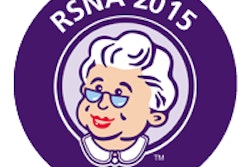
For reducing inappropriate CT scans, clinical decision-support software is a good place to start. But the software alone isn't enough to get doctors to comply, according to a study in the American Journal of Roentgenology. The researchers found that letting doctors know their ordering patterns are being watched can help.
Regular performance feedback combined with clinical decision support convinced most doctors to tow the line and cut unnecessary CT scans for suspected pulmonary embolism (PE), the results show (AJR, July 23, 2015). After feedback began rolling in, inappropriate CT referrals for dropped by more than a third among doctors who received feedback, with no corresponding change among physicians who did not receive feedback.
The results showed that regular performance feedback reports "modestly but significantly" increased physician adherence to evidence-based guidelines for CT evaluation of suspected PE beyond the improvements gained through use of CDS alone," wrote a team led by Dr. Ali Raja from Brigham and Women's Hospital in Boston.
"Right now a lot of places are implementing clinical decision support because it's mandated by law," Raja said. "This study takes it to the next level by adding on quarterly feedback reporting, and it shows that you can do better than just the CDS itself."
CT use rising
The use of CT for suspected PE has risen markedly without a corresponding increase in positive diagnoses in recent years, suggesting that overdiagnosis -- and, therefore, overuse of CT -- may be occurring, the study authors wrote.
"The diagnosis of PE requires risk stratification and, potentially, use of CT, which may carry risks of both radiation and renal injury owing to administration of IV contrast material," they wrote.
And even though clinical decision support boosts adherence to clinical guidelines somewhat, there is room for improvement, because most CT exams are still don't adhere to imaging criteria.
U.S. law mandates CDS for maximum reimbursement as part of stage 2 meaningful use guidelines, and clinical decision support will also be mandated as part of a broader set of regulations that will be implemented as part of the Protecting Access to Medicare Act of 2014 for emergency department imaging exams.
But even if decision support recommends against a scan, doctors are free to ignore it and proceed with the CT.
The authors hypothesized that CDS combined with feedback could reduce the inappropriate use of CT for suspected PE. The study also sought to determine the impact of feedback on CT utilization rates for suspected PE.
Some got feedback
The investigators studied CT use for PE throughout 2012 at a level 1 trauma center in 2012, stratifying physicians into quartiles based on CT use during the year. Then, in 2013, the doctors were randomized to receive feedback by email that listed their compliance level in adhering to decision-support guidelines (Wells criteria for pulmonary embolism) for CT use in PE. The Wells criteria focus on several patient historical factors, such as if the patient has cancer, previous deep vein thrombosis or PE, immobilization, or heart rate over 100 beats per minute, Raja explained.
Armed with the patient's clinical presentation, the Wells criteria are used to predict the risk of PE. The participating physicians received their report along with the rankings of other participants, with all data anonymized.
At the end of the second year, the team measured CT use with and without feedback in addition to CDS in both the control group of physicians and the intervention group who got feedback.
Better compliance
Among 2,167 patients who underwent CT evaluation for pulmonary embolism, adherence to the guidelines remained unchanged between 2012 (78.8%) and 2013 (77.2%, p = 0.5) for the control group.
However, in the intervention group that received feedback, guideline adherence increased from 78.3% in 2012 to 85.2% in 2013 (p < 0.0043), the authors reported, demonstrating an absolute increase of 6.9 percentage points and a relative increase of 8.8% (p < 0.05).
Put another way, the improvement represents a 31.8% reduction in deviation from evidence-based guidelines, the group wrote.
The researchers also found a trend toward decreased CT use after intervention (20.2 scans for PE per 1,000 patient emergency room visits before intervention versus 18.1 per 1,000 visits after. And a second trend suggested an increased yield of positive exams: 11.2% before intervention and 13.1% after intervention. But neither of these categories showed significant changes.
"Our findings show that the use of quarterly physician-specific performance feedback reports in conjunction with CDS augmented adherence to evidence-based guideline gains observed through CDS use alone," Raja and colleagues wrote.
Under the gun
Were doctors simply on heightened alert knowing they were being studied? In a word, yes.
"That's actually the point," Raja said. "I want them to know that we're watching and that this is the one thing we're focusing on. The improvement has to come from them knowing that we're counting it."
The other motivator is variation -- doctors knowing that what they're doing is not in line with their colleagues is a powerful motivator for compliance, he said.
"Physicians are inherently competitive, and this gets them to that," Raja said.
New behaviors
Previous research showing more appropriate CT use with clinical decision support still left 1 in 4 doctors who received a negative recommendation and went ahead and ordered the scan anyway. The current study showed better results with a combined approach, Raja said. Without feedback, CDS alone just doesn't work as well.
"Everyone is rolling out clinical decision support thinking it's going to be the panacea for everything," he said. "But it's not the ultimate fix."
In light of the success of feedback for CT scans of suspected PE, the study team plans to apply it to other exams.
"We found that feedback works for this," he said. "There's no reason to think it won't work for MRI for lower back pain, for ankle x-rays, for head CT for trauma. There's all sorts of stuff that it should work for, so we're going to roll it out much more broadly now."
Of course, even the combined approach leaves compliance less than perfect, Raja said.
"About 20% of people still didn't adhere to guidelines. There may be some defensive medicine. There may be some patients that guidelines don't account for. And it may be just some folks who are resistant to change," Raja said. "But 80% is pretty good. We can keep fighting the last 20%, or we can move on to the next exam, for which adherence is in the 40s, and build it up to 80% or 90%. And if we can get that I think it's pretty good."




















